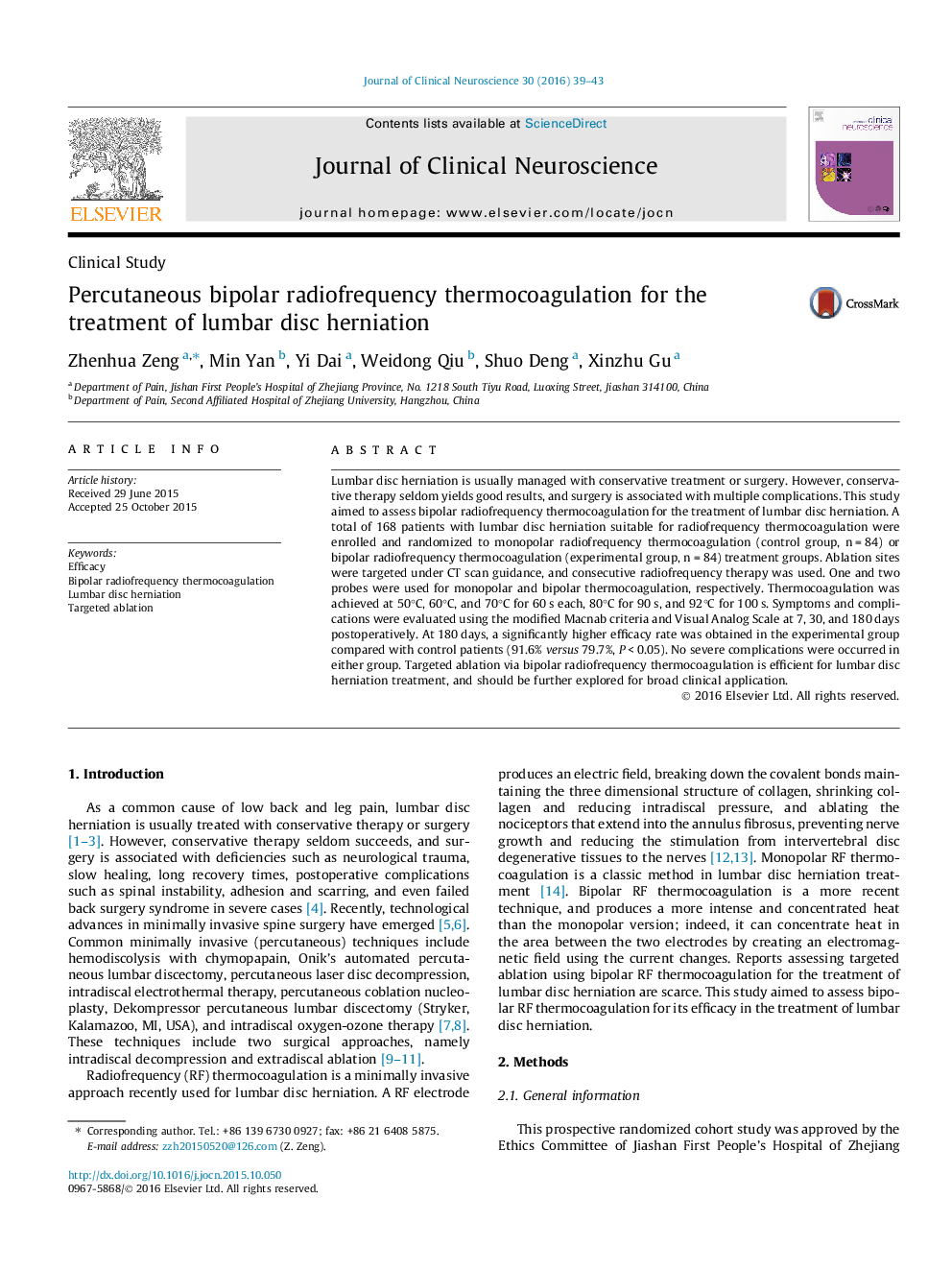| Article ID | Journal | Published Year | Pages | File Type |
|---|---|---|---|---|
| 3058136 | Journal of Clinical Neuroscience | 2016 | 5 Pages |
•Targeted ablation is efficient for lumbar disc herniation treatment.•Bipolar radiofrequency thermocoagulation had significantly higher efficacy.•No severe complications were occurred after monopolar or bipolar thermocoagulation.
Lumbar disc herniation is usually managed with conservative treatment or surgery. However, conservative therapy seldom yields good results, and surgery is associated with multiple complications. This study aimed to assess bipolar radiofrequency thermocoagulation for the treatment of lumbar disc herniation. A total of 168 patients with lumbar disc herniation suitable for radiofrequency thermocoagulation were enrolled and randomized to monopolar radiofrequency thermocoagulation (control group, n = 84) or bipolar radiofrequency thermocoagulation (experimental group, n = 84) treatment groups. Ablation sites were targeted under CT scan guidance, and consecutive radiofrequency therapy was used. One and two probes were used for monopolar and bipolar thermocoagulation, respectively. Thermocoagulation was achieved at 50°C, 60°C, and 70°C for 60 s each, 80°C for 90 s, and 92°C for 100 s. Symptoms and complications were evaluated using the modified Macnab criteria and Visual Analog Scale at 7, 30, and 180 days postoperatively. At 180 days, a significantly higher efficacy rate was obtained in the experimental group compared with control patients (91.6% versus 79.7%, P < 0.05). No severe complications were occurred in either group. Targeted ablation via bipolar radiofrequency thermocoagulation is efficient for lumbar disc herniation treatment, and should be further explored for broad clinical application.
